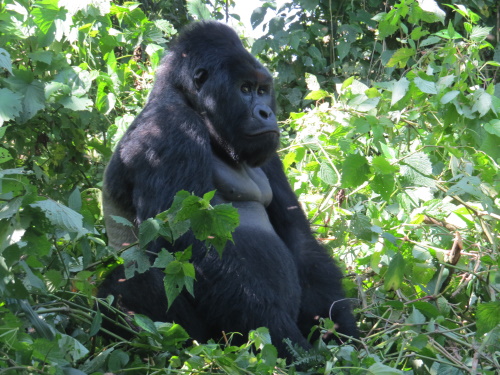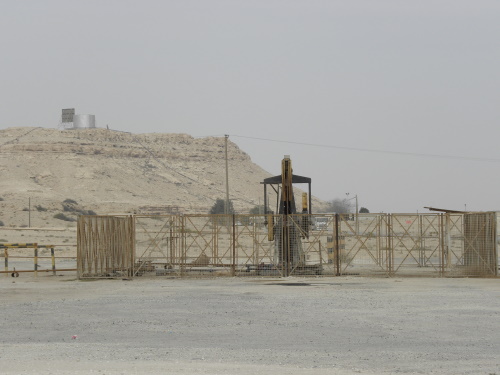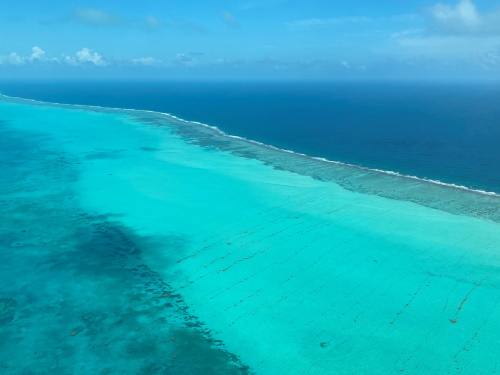Blog Connections
Threatened by Oil and Gas Exploration
In the past week, it was all over the news that the DRC government has opened parts of Virunga WHS up (again) for oil and gas exploration. Simultaneously, I was prepping for my upcoming Chad trip and discovered that the Ennedi nomination had been significantly reduced in size to carve out an area for oil exploration just before nomination (much to the frustration of ICOMOS and IUCN). Surprisingly, in our ‘Damaged’ series of connections, we did not have a connection yet for World Heritage Sites Threatened by Oil and Gas Exploration (though we have Oil Spill). So I decided to create one.

A structured approach to finding these sites proved to be difficult. A search for “oil” on the UNESCO website brought me to 47 sites with “Soil” and similar words in their description. You’d want to do a full-text search on all documents, not only on the website text, but this feature is not available. A query through our “News Links” brought in a few more, as did a search in the State of Conservation (SOC) and IUCN outlook reports. None of the sites seemed to have been put in danger from oil or gas exploration.
I ended up with 17 WHS which I think are the clearest examples. IUCN in its 2020 Outlook on the status of natural WHS, divides the threats they face into “Current” versus “Potential”. All quotes below are taken from the respective IUCN Outlook 2020 assessment unless stated otherwise.
Sites with Current Threats
- Canadian Rocky Mountain Parks: "Most of the mountain parks abut active resource extraction areas (forest harvest, oil and gas, and mining areas) and park managers have identified potential impacts to wildlife movement and species (e.g. grizzly bear, woodland caribou) posed by such activities."
- Dinosaur Provincial Park: "Gas exploration and development occurs on portions of the perimeter of the site and associated infrastructure has the potential to degrade the beauty of the site in those areas."
- Lake Malawi: "Offshore oil exploration activities have commenced in the northern part of the Lake... Although this is some distance from the World Heritage property it presents the risk of oil and other pollutants spilling into the lake, which would have far-reaching consequences. In late 2013, a second oil concession was awarded, which covers the southern part of the lake, including the entire property. .. More recently, Hamra Holdings Inc. has been licensed to explore for oil in the lake until 2022."
- Ningaloo Coast: "There are several offshore oil and gas extraction operations near the site and a number of pending on- and offshore project proposals, which potentially pose a significant impact of the World Heritage values. Potential impacts include effects on migratory species, connectivity and ecological linkages within and adjacent the site, cumulative impacts including effects on migratory species from seismic testing, drilling, and operations. Offshore petroleum incidents, such as accidental discharge of oil or other pollutants pose a significant and most likely irreversible threat to the marine life and ecosystems."
- Paraty and Ilha Grande: "reservoirs located along the marine sedimentary basins, .., in waters between 2,000 and 3,000 meters deep and at distances ranging from 50 to 450 km from the coast. In their central part, the projects are located in front of the states of São Paulo and Rio de Janeiro. Possible environmental impacts such as oil leaks, beach contamination, introduction of exotic invasive organisms and others, are related to the activities of the production pilots."
- Wadden Sea: "No new exploitation installations for oil and gas are permitted in the World Heritage site. One existing installation, the Mittelplate, was excised from the site, as well as a gas exploitation area in the Netherlands. .. Subsidence as a result of gas extraction in the Dutch part of the Wadden Sea is causing impacts, with a maximum of 42cm subsidence reported in 2015 underneath Ameland island."
- Wrangel Island: "Recent research indicates that the hydrocarbon potential in the South Chukchi Basin may be significantly higher than previously suggested. ... The interplay of oceanic advection, limited emergency response capacities and arctic weather conditions suggests that Wrangel Island, including important polar bear habitat, would likely be affected by spills even in considerable distances from the site."
Another one from North America must be added, Chaco Culture, although it is not mentioned in the Outlook as it is a cultural site and therefore not monitored by IUCN: "Energy exploration and extraction, specifically oil and gas production currently threatens viewshed and the assocciated cultural landscape" (Periodic Reporting 2013) and "On November 15, 2021, the Interior Department placed a 2-year pause of new oil and natural gas leasing on federal lands within a 10-mile buffer zone of Chaco Canyon." (news source).
And looking at the most recent developments, Virunga should be downgraded to this category as well: "Most of Virunga National Park is covered by 3 oil prospection blocks (Blocks III, IV, and V).... The World Heritage Committee has repeatedly expressed its concern regarding the existance of oil concessions in Virunga National Park and requested the DRC government to not issue any more exploration permits for Virunga NP."

Sites with Potential Threats
- Belize Barrier Reef: "A number of Petroleum Sharing Agreements (PSA) in the marine areas used to overlap or be adjacent to the property. An indefinite moratorium on petroleum operations within the limits of the marine zone of Belize was enacted"
- Carlsbad Caverns: "Currently, the most significant impact by the region's oil and gas development on the park is on the views from the park. Flaring has increased haze, limiting views of daytime vistas, and increased ambient light to impact views of the night sky."
- Ennedi Massif: "The reduction in the area proposed for inscription was triggered by the fact that an oil concession was granted in the area which was removed from the boundaries. While this means that no oil concessions overlap with the boundaries of the site as inscribed, .... Future oil operations in the vicinity of the site may have impacts on the site's integrity and values"
- Gros Morne: "Potential petroleum exploration activity in the vicinity of Gros Morne remains a possibility and would be of major consequence to the property’s exceptional natural beauty and biodiversity if it were to go ahead. ... While there is currently no opportunity to bid for licenses offshore directly adjacent to Gros Morne, there is no mechanism in place to prevent the bid system from re-opening this area in the future."
- Manú NP: "Oil and gas exploration and extraction is occurring south of the site. The Camisea gas field, one of the largest energy projects in Peru, is located in a remote area in the immediate vicinity of the site. Interest in a possible expansion despite National Park and World Heritage Site status has been repeatedly expressed which would carry significant risks to the site and the indigenous populations that inhabit it."
- Selous Game Reserve: "To this day, there appears to be a lack of clarity in terms of mineral exploration and exploitation in the property and a major overlap between the game reserve and exploration and extraction licenses becomes obvious from publicly accessible cadasters."
- Tubbataha Reefs: "There is continued interest in the Philippines to explore for oil/gas in the Sulu Sea. However, exploration is forbidden within the Marine Park and buffer zone."
- Waterton Glacier: "These actions [The Province of British Columbia banned oil and gas and mining in most of the Canadian Flathead Valley in 2010 (British Columbia, Province of and State of Montana, 2010); North Fork Watershed Protection Act (2014)] have reduced a major threat of fragmentation in the lands connecting the World Heritage site with other montane habitats along the Rocky Mountains"
Based on news reports and small remarks in official documents, there are more candidate sites for this connection. Being cultural sites, however, they seem to be under less scrutiny than natural WHS. Examples are: Mesa Verde (Oil and gas production in southwest Colorado), Lamu ("the proposed port and cruise ship berth, and oil exploration"), and Ahwar of Southern Iraq ("clarification and regulation measures need to be put in place in buffer zones where potential oil extraction activities could constitute").

Possible impact
The possible impact of the threats is surprisingly variable:
- wildlife cannot roam as freely anymore to buffer areas
- earthquakes
- spoilt views
- contaminated air and water supply
- social unrest
- oil spills that harm marine and coastal biodiversity (although these seem to happen more after shipping accidents)
Do you know of any other WHS that are Threatened by Oil and Gas Exploration?
Els - 7 August 2022
Comments
Els Slots 7 August 2022
Good find, that WWF report, Solivagant! I am checking them with the IUCN Outlook 2020. If a site is in there, at least the risk is still there and I will add them to the connection.
There is already a difference between "Current" and "Potential" - Some sites have good legal protection now (Belize Barrier Reef), but this can be overturned quickly when a political situation changes.
Solivagant 7 August 2022
A "problem" with the Connection is how "real" or "active" does the possibility have to be. This WWF document from 2015 lists far more
http://assets.wwf.org.uk/downloads/a_global_assessment_of_extractives_activity_within_natural_whsfinal_.pdf
And I noted that the Giants Causeway actually had a concession which overlapped the boundaries - but was cancelled.... https://whc.unesco.org/en/soc/2884/